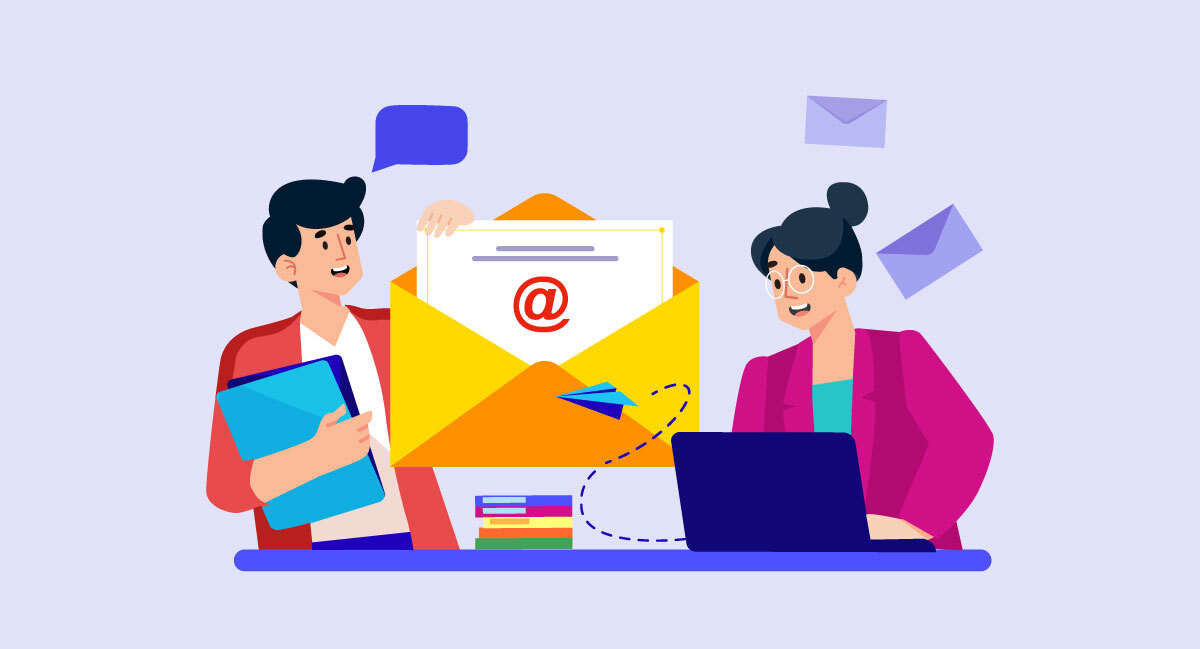In email marketing, the key metric that really matters is how many people open your emails. If lots of folks are opening them, you’re doing a great job. Conversely, if the open rates are low, the effectiveness of your other efforts comes into question.
When you learn this, avoid attempting to deceive people into opening your marketing emails. While it might give you a temporary boost in opens, it will have negative consequences in the long term.
Our goal is to guide you in determining a good open rate and providing you with the best practices to achieve it.
High Open Rate at Any Expense
While a 20-25% open rate is often touted as a benchmark, it’s essential to approach this metric strategically. Pursuing a high open rate at any expense in the short term may jeopardize long-term success. The key lies in thoughtful planning rather than a blind pursuit of lofty open rate goals.
Consider the case of Sarah’s boutique skincare brand. By focusing on crafting compelling subject lines that emphasize the benefits of her products, she consistently achieves a 15% open rate. Despite falling below the conventional benchmark, her strategic approach results in higher conversion rates and customer satisfaction, proving that success in email marketing extends beyond just open rates.
Warmer and Colder Leads
It’s crucial not to fixate solely on achieving a very high open rate for all types of leads. Successful email marketing involves catering to both warmer and colder leads, and segmenting the audience correctly. Expecting identical open rates for warm and cold prospects is like seeking a one-size-fits-all solution.
A universal approach is less than ideal because each scenario is unique, and what proves effective in one context may not work as well in another. A one-size-fits-all strategy might overlook specific needs and preferences, resulting in suboptimal rather than optimal outcomes.
Let’s consider an online clothing store targeting both loyal customers (warm prospects) and new newsletter subscribers (cold prospects). While loyal customers eagerly anticipate emails, new subscribers may need time to warm up. Offering exclusive discounts to existing customers and introducing fresh collections to new subscribers, can boost overall engagement and open rates.
Open Rates vs Overall Business Growth
While a healthy open rate matters, fixating on an excessively high figure without considering the broader business context often leads to unintended consequences.
Aiming for an extremely high email open rate might mean focusing only on the most active subscribers and removing less engaged ones. While this could temporarily boost open rates, it may conflict with the goal of maintaining a diverse customer base. Over time, neglecting less active leads could impact overall revenue.
Being hyper-focused on open rates may divert attention from other vital aspects of your business strategy, like launching new products or improving customer support.
If your business relies on a high volume of leads, prioritizing an ultra-high open rate could be counterproductive. It’s crucial to strike a balance between open rates and overall business growth.
Tricks and Gimmicks in Subject Lines
Avoid the temptation to boost opens through tricks and gimmicks, as they may backfire in the long run. Anchor your email marketing strategy on best practices. Your subject line should serve as a beacon, clearly communicating the value subscribers can derive from the email.
Instead of a clickbait subject like “You won’t believe what’s inside!”, opt for a straightforward one like “Unlock Exclusive Deals for Black Friday.”
While incorporating additional subject line tricks to create curiosity or suspense can be effective, use them sparingly. Reserve these tactics for special occasions such as product launches or promotions to prevent annoyance and maintain subscriber engagement.
Let’s consider the case of John’s tech blog. By consistently delivering valuable content with subject lines that accurately reflect the article’s content, he maintains a loyal subscriber base. In contrast, a competitor who frequently uses misleading subject lines might see a temporary spike in open rates but risks long-term subscriber distrust and disengagement.
Now, think about Jane, who runs an e-commerce store specializing in limited edition products. She occasionally employs subject line tricks to create curiosity, especially during product launches. This tactic keeps her subscribers intrigued and engaged. By reserving these attention-grabbing techniques for special occasions, she avoids overwhelming her audience and maintains a healthy open rate.
Leveraging the preheader text area can further boost open rates, presenting an extra chance to captivate subscribers. This often-overlooked space can provide an additional opportunity to entice subscribers and increase overall engagement.
Quality Triumphs Over Quantity?
It’s nearly impossible to achieve good open rates with a poor-quality contact list. Resist the urge to grow your prospect base at any cost and focus on cultivating a list of engaged and qualified leads. Instead of acquiring contacts through deceptive tactics, concentrate on attracting qualified leads genuinely interested in your content or products.
Consider the case of Tom’s SaaS company. Tom understands that even the most engaged subscribers may change jobs or priorities. By regularly cleaning his email list and removing inactive or unengaged contacts, he ensures that his messages reach those genuinely interested in his software solutions.

Maintaining list hygiene is mandatory, even with a high-quality list. Circumstances change, and subscribers may lose interest for various reasons. Choose a platform like, Contact Consumers, experienced in list hygiene to ensure the continued effectiveness of your email campaigns.
Now let’s delve into the idea that in certain niches and business models, prioritizing quantity over quality might be a strategic choice, and as a consequence, high open rates may not be the primary expectation:
In the affiliate marketing space, marketers often send out a multitude of emails promoting various products and services. While open rates may not be exceptionally high for each campaign, the strategy’s success could be measured in the cumulative impact on sales and commissions.
Social platforms organizing various events might prioritize quantity in their email invitations to ensure widespread participation. The goal is to reach as many potential attendees as possible, even if the open rates per invitation might not be extraordinarily high. The success of the campaign is measured in terms of overall event attendance and engagement.
Failure to Deliver on Promises
Overpromising in your email content and subsequently failing to deliver can harm your open rates. Consistently underpromise and overdeliver to build trust with your audience. If you promise exclusive discounts, ensure they are genuinely valuable and delivered as advertised.
Direct Reflection of Engagement
Adopt a holistic approach where the overarching goal is to increase engagement. Higher engagement naturally leads to improved open rates.
Suppose you run an e-commerce store. By adopting a holistic strategy that includes personalized product recommendations, exclusive discounts, and engaging storytelling through emails, you create a comprehensive brand experience. As customers engage with personalized content, they develop a stronger connection with your brand, leading to improved open rates as they eagerly explore what each email has to offer.
If engagement is the secret sauce for higher open rates, personalization is the catalyst. Tailoring your emails to individual preferences and behaviors fosters a sense of connection and encourages subscribers to open and engage with your content.
Picture Mike, who manages an online community for photography enthusiasts. Recognizing that engagement is paramount, he personalizes his emails based on individual members’ preferences and participation levels in the community. This personal touch significantly boosts open rates, as members feel a stronger connection to the content tailored specifically for them.

Remember that the initial welcome email holds the highest engagement rates, making it a crucial moment to initiate subscribers into a habit-forming journey. Capitalize on this golden opportunity by:
Establishing a positive tone for relationship building.
Generating anticipation for subsequent emails in the welcome series.
Providing substantial value throughout the entire welcome series.
Encouraging action in response to your emails.
Focus on building a human and personable connection with your audience. Envision yourself as a knowledgeable and caring mentor who is further along the same journey as your readers. This mindset fosters a genuine interest in improving and providing better solutions to help your audience achieve their goals efficiently.
Ensure your emails are reader-focused, concentrating on what’s valuable and relevant to your audience. Avoid the common mistake of treating marketing as a form of self-promotion or bragging. Instead, focus on showcasing how your products or features enhance your customers’ lives.
By consistently delivering value and caring about your audience’s feedback, you naturally build a relationship that goes beyond transactional interactions.
Train Subscribers to Open Your Emails
Inconsistency may yield negligible results. Establishing a regular and dependable pattern in various aspects of email marketing enhances the overall subscriber experience and, in turn, positively influences open rates.
Imagine you’re a fitness app sending daily workout tips to your subscribers. If you inconsistently deliver these tips at random times throughout the week, your users may miss crucial advice, leading to a decline in engagement.
Suppose you run a weekly newsletter for a tech blog. Inconsistent publishing, where some weeks you send multiple emails and others none at all, can lead to subscriber confusion and disengagement. However, a consistent weekly schedule helps set expectations, and subscribers are more likely to open and engage with your content regularly.
The timing of your email sends can also impact open rates, but the optimal timing varies depending on your industry and audience. Testing different sending times is a necessity to discover what works best for your specific situation.
Consider industry norms and the nature of your content. Experiment with sending emails on Tuesdays during office hours for a B2B audience and during evenings for a B2C audience.
Misleading Comparison
Even within the same industry, different businesses operate with distinct models, strategies, priorities, resources, and reserves. Drawing parallels without considering these variations may lead to misguided expectations and ineffective practices.
Take the example of two fitness app companies, FitX and HealthVibe. FitX might boast a higher open rate, but closer inspection reveals that they prioritize sending daily workout reminders, while HealthVibe concentrates on weekly motivational content.
The difference in strategies means that a direct comparison based solely on open rates is insufficient. Each company’s approach aligns with its unique business model and customer engagement priorities.
While this article provides valuable insights, every business is unique. For personalized guidance on implementing email marketing strategies tailored to your specific needs, let’s start a conversation. Understanding the nuances of your business will enable us to craft a strategy that aligns seamlessly with your goals and resonates with your audience.




